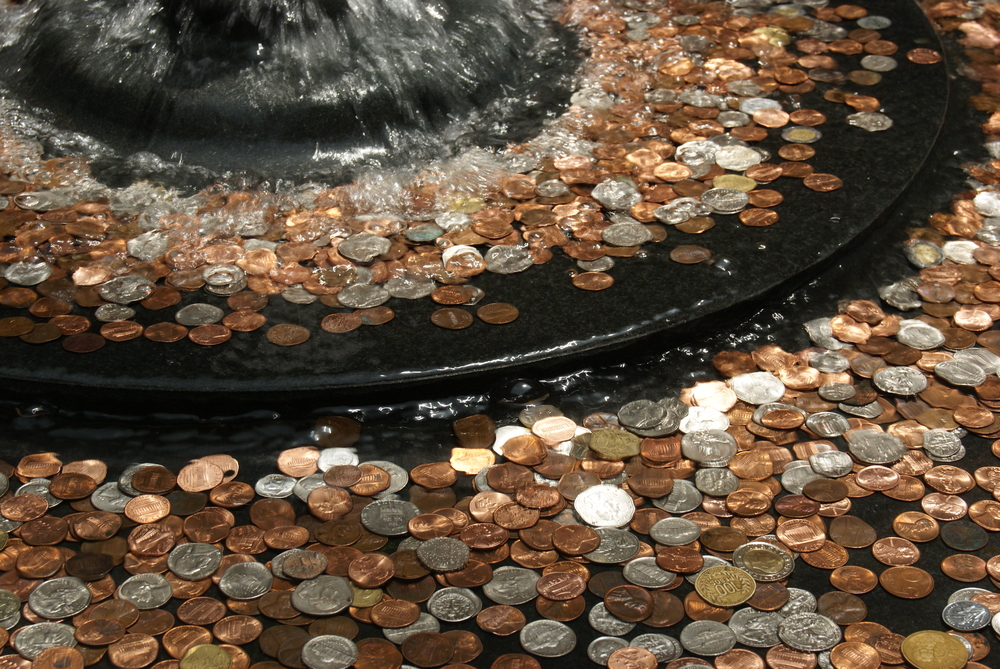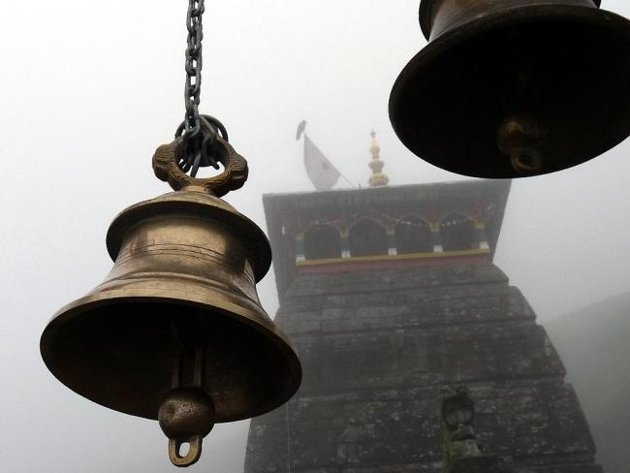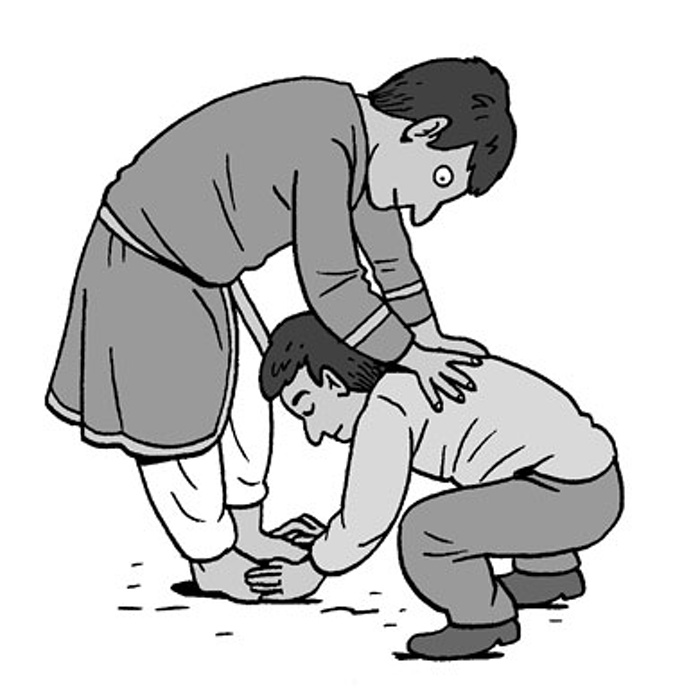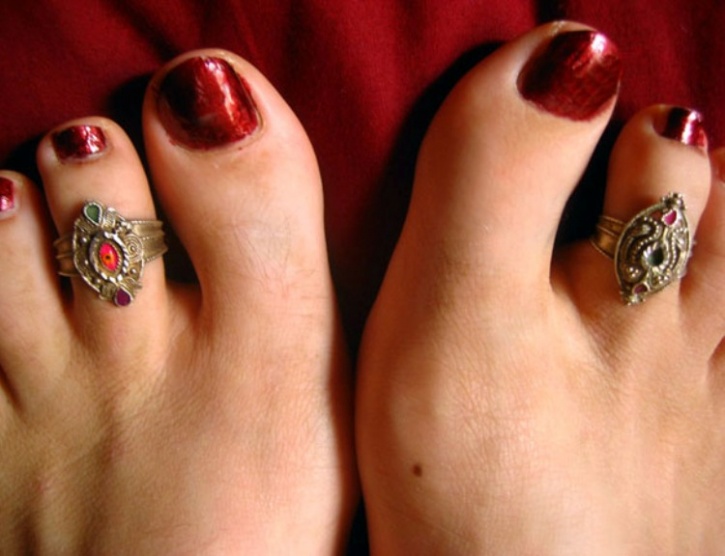1. Join Both Hands Together to Greet Each Other
Image Source
In Hindu society, individuals welcome one another by joining their palms – termed as “Namastey.” The main purpose for this custom is that welcome by joining both the palms means respect. However, scientifically speaking, joining both hands ensures joining the tips of all the fingers together; which are denoted to the pressure points of eyes, ears, and mind. Pressing them together is said to activate the pressure points which helps us remember that person for a long time. And, no germs since we don’t make any physical contact!
2. Tossing Coins Into A River
Image Source
The general thinking given for this tradition is that it brings Good Luck. However, scientifically speaking, in the old times most of the coins was made of copper. Copper is very useful for human body. Tossing copper coins into the river was one of the way to ensured we intake sufficient copper as part of the water because river was the one of the source for drinking water.
3. Keeping Tilak/KumKum On The Forehead
Image Source
On the forehead, between the two eyes, is a placet that is considered as a noteworthy nerve point in human body. The Tilak is believed to prevent the loss of “energy”, the red ‘kumkum’ between the eyebrows is said to retain energy in the human body and control the various levels of focus. While applying kumkum the points on the mid-brow region and Adnya-chakra are automatically pressed. This also facilitates the blood supply to the face muscles.
4, Why Temples Have Bells
Image Source
According to Agama Sastra, the bell is used to give sound for keeping evil forces away and the ring of the bell is pleasant to God. However, the scientific reason behind bells is that their ring clears our mind and helps us stay sharp and keep our full concentration on devotional purpose. These bells are made in such a way that when they produce a sound it creates a unity in the Left and Right parts of our brains. The moment we ring the bell, it produces a sharp and enduring sound which lasts for minimum of 7 seconds in echo mode. The duration of echo is good enough to activate all the seven healing centres in our body. This results in emptying our brain from all negative thoughts.
5. Why Do We Apply Mehendi On The Hand And Feet
Image Source
Mehndi is a very powerful medicinal herb. Weddings are stressful, and often, the stress causes headaches and fevers. As the wedding day approaches, the excitement mixed with nervous anticipation can take its toll on the bride and groom. Application of mehndi can prevent too much stress because it cools the body and keeps the nerves from becoming tense. This is the reason why mehndi is applied on the hands and feet, which house nerve endings in the body
6. Why We Pierce Ear
Image Source
Piercing the ears has a great importance in Indian ethos. Indian physicians and philosophers believe that piercing the ears helps in the development of intellect, power of thinking and decision making faculties. Talkativeness fritters away life energy. Ear piercing helps in speech-restraint. It helps to reduce impertinent behavior and the ear-channels become free from disorders. This idea appeals to the Western world as well, and so they are getting their ears pierced to wear fancy earrings as a mark of fashion.
7. Why We Do Surya Namaskar
Image Source
Hindus have a tradition of paying regards to Sun God early in the morning by their water offering ritual. It was mainly because looking at Sun rays through water or directly at that time of the day is good for eyes and also by waking up to follow this routine, we become prone to a morning lifestyle and mornings are proven to be the most effective part of the day.
8. Choti On The Male Head
Image Source
Sushrut rishi, the foremost surgeon of Ayurveda, describes the master sensitive spot on the head as Adhipati Marma, where there is a nexus of all nerves. The shikha protects this spot. Below, in the brain, occurs the Brahmarandhra, where the sushumnã (nerve) arrives from the lower part of the body. In Yog, Brahmarandhra is the highest, seventh chakra, with the thousand-petalled lotus. It is the centre of wisdom. The knotted shikhã helps boost this centre and conserve its subtle energy known as ojas.
9. The Scientific Explanation Of Touching Feet
Image Source
The person of whose feet you are touching is either old or pious. When they accept your respect which came from your reduced ego (and is called your shraddha) their hearts emit positive thoughts and energy (which is called their karuna) which reaches you through their hands and toes. In essence, the completed circuit enables flow of energy and increases cosmic energy, switching on a quick connect between two minds and hearts. To an extent, the same is achieved through handshakes and hugs. The nerves that start from our brain spread across all your body. These nerves or wires end in the fingertips of your hand and feet. When you join the fingertips of your hand to those of their opposite feet, a circuit is immediately formed and the energies of two bodies are connected. Your fingers and palms become the ‘receptor’ of energy and the feet of other person become the ‘giver’ of energy.
10. Why Do Indian Women Wear Toe Ring
Image Source
Wearing toe rings is not just the significance of married women but there is science behind it. Normally toe rings are worn on the second toe. A particular nerve from the second toe connects the uterus and passes to heart. Wearing toe ring on this finger strengthens the uterus. It will keep it healthy by regulating the blood flow to it and menstrual cycle will be regularized. As Silver is a good conductor, it also absorbs polar energies from the earth and passes it to the body.















